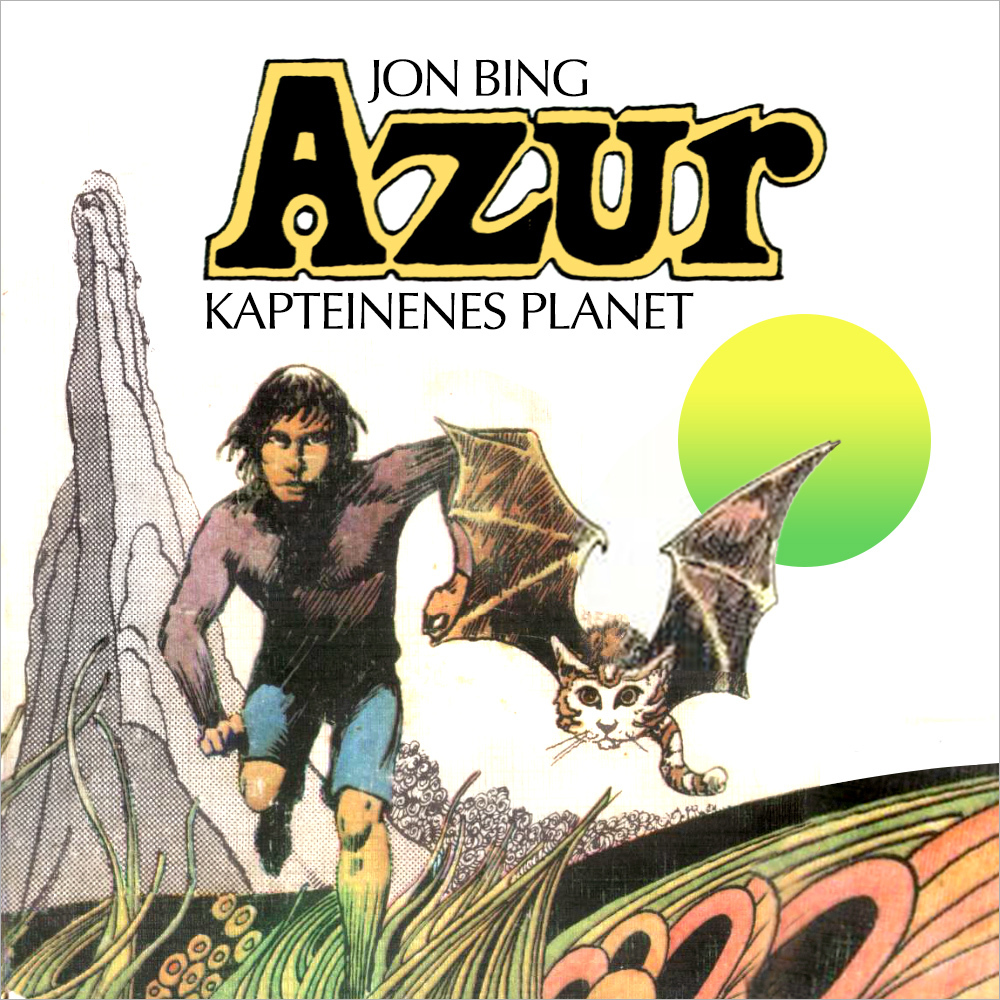 Story time, my macarons! (Concert time is on Wednesday.)
Story time, my macarons! (Concert time is on Wednesday.)
A longform article on the music I did in the 90ies, as the tracker artist
Gnosis. It’s a great tale, with awkward photos and a naive soundtrack, now available on
Spotify,
Bandcamp and
Soundcloud. Some of those tracks have NEVER been published. Hit play with mercy. Let’s take a look at my 90ies tracks, and explore how books, tools and the era itself was influencing and shaping me to the artist I am today.
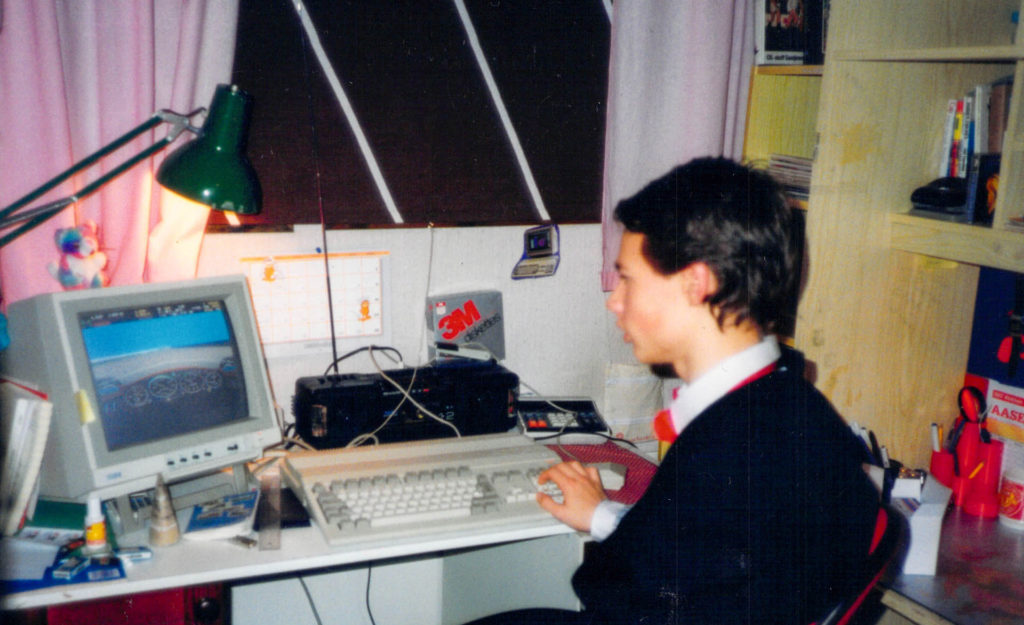
Coincidentally, everything has come full circle. Right now we are ALL alone inside in front of a screen, trying to make sense of things. That’s how I started out, alone inside with a computer trying to make sense of things. And see? I’m still here, 30 years later! Don’t worry, we’ll be fiiiine. But we’ll probably all be pirates.
I’m by nature introvert, it suits me very well, staying quietly inside my head making up ideas, stories, worlds. I prefer using my fantasy to imagine an idea, and then shape it to life with digital tools, and publish it in a digital universe. That way both me and the idea stay in this theoretical, make-believe world. It’s never tainted by becoming a physical product. I love making digital creations, because they’re never really FINISHED, you can always UNDO, which means, they are in a way always alive, forever.
But, wait, this makes me sound like an innocent angel, creating blissful magic out of bits and bytes. That is NOT true. I am a notorious and lazy pirate, stealing like a smug raven, hacking together Frankenstein monsters out of stolen parts. They’ll fall over if you blow at them. They’ll fall with with a great sense of drama. It’s all facade, but in a digital world… isn’t everything just a facade?
Background
First, a bio background, there are important elements in my childhood that explains why I’m creating the way I do.
I was born in 1975 on the outskirts of suburbia on the outskirts of west-coast of Norway, itself an outskirt of Europe, and I grew up at first extremely analogue. I had a wilderness childhood without devices, my most sophisticated device was a flashlight with sucky batteries that had settings for white, green and red light. I loved roaming for myself in forests, just outside the door of our social-democratic apartment block. I wanted to be a truck driver when I grew up. Or, maybe post office worker, I loved stamping things so hard. KACHING. KACHING. APPROVE. Notice – this explains my patience with touring and endless label admin paperwork.
As a kid I often created complex toy roads and cities and megastructures on the playground, and then acting out the immense catastrophes that could – did, of course – happen to these doomed worlds. Oh no, the dam broke! The tree fell! The avalanche! The cave collapse! The 800 meter human monster! The gigantic runaway bike! What will happen to this tiny village filled with innocent unaware .. ooooh noooo its completely obliterated. They’re all dead, what a tragedy. What a catastrophe. Notice – an early preference for grand spectacle and drama. No wonder the gloomy wagnerian chords and immense beats.
My favourite picture book was on road engineering, I drew “improved” versions of the roads on top of them, making loops and hacks and a recursive mess of undrivable roads. Notice – I’m stealing and “improving” on the work of others by total chaotic obfuscation.
I was an anxious kid and I preferred playing alone. (Nothing has changed!) There was at first no TV, then there was a black and white TV, then in primary school we got a rotary phone and then we got a colour TV, with one state channel. I could cope with the information flow. I mean that both flippantly, but also honestly, this is an interesting observation. I know the old analogue world, AND I know the new digital world. I grew up into the new connected world, together with it.
I loved recording my favourite songs (Ghostbusters!) from radio onto my own mixtapes, and I loved discovering that the play button halfway down on the dubbing deck made chipmunk effects of the radio voices. Notice – early misuse of technology to manipulate existing media samples.
The importance of libraries
Then, in primary school, I discovered sci-fi at the school library, and my imagination took off.
The Alexandria starship sci-fi books of
Jon Bing. They
chronicle a library starship travelling the universe, resolving conflicts of large and small scale with compassion, information and diplomacy, not battles and swords. As an adult I’ve understood Bing must have been inspired by Ursula Le Guin, indeed he was her Norwegian translator. The Alexandria series echoes a lot of the Earthsea cycle, just with starships and information instead of magic and wizards. Notice – I’m learning the values of knowledge and sharing information, and the patient strength of soft power.
These books, and Bings beautiful philosophy on the value of open information, created a spark of interest in technology and computers (and escapist sci-fi). With spooky timing, my school coincidentally had a summer course on programming computers the same summer. I think this came through the enthusiasm of a geeky teacher wanting to show the kids something “cool”.
As an aspiring geek I attended the course after regular classes, we learned to program 1 FPS movement of geometric circles and lines on a screen. This must have been 1985 or so. I was instantly mesmerised and falling in love with programming. I could make pixels move around by typing commands. The seeds were planted: How can I make an immense catastrophe happen to these pixels.
The importance of computers
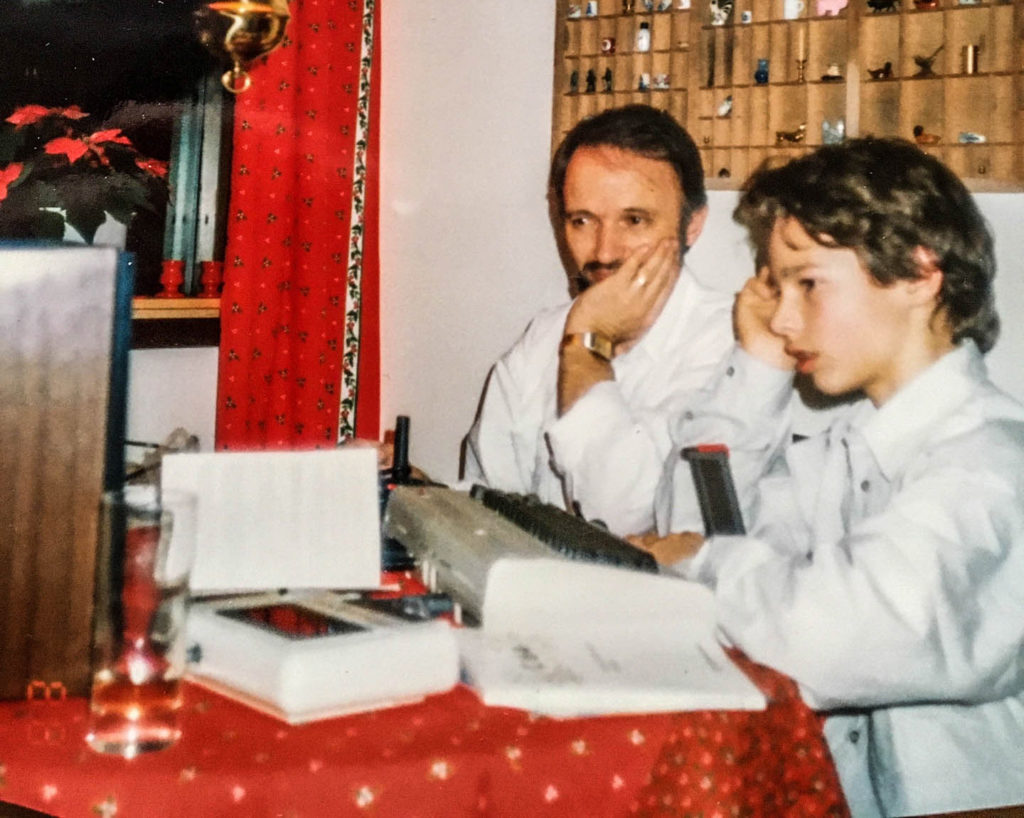
One or two years later, my dad got me a Commodore 64 for christmas, which I am eternally grateful for. I hold every christmas to this christmas, they all fail. He didn’t just give me a device for entertainment, he gave me access to a tool, a path into the future. I played games of course, but I was more interested in creating and programming than playing. I taught myself Basic, creating ridiculous text-based adventure games with challenges like “your mum tells you do do laundry, answer: yes or no”, cycling through all of the 16 screen colours and animating falling letters. I also dabbled with making ridiculous bleeps and bloops on the soundchip, but couldn’t figure out how to make music with Basic programming.
I was too inexperienced (and also too lazy, nothing has changed) to program my own assembler stuff for proper chiptune music. At the time I was not aware there existed music software – I thought everything had to be programmed from scratch – and I had no network to be informed that such tools indeed existed. Notice – at the very start I learned that I had to do everything myself with programming. But I loooooved the music of C64 games, the built-to-last melodies of video game scores and the SOUND of this chiptune music – I often had the games like Last Ninja just standing by while doing homework or writing fiction so I could
listen to their soundtracks. I was very curious how this was made, but no path to discovering how.
The horrors of ungdomsskolen
Everything changed in secondary school. Mostly me. I went overnight from a playful naive child, to an angsty teenager. Everybody’s time in secondary school is gruesome, mine was no exception. I was in a new class, in a rough school, in a bad hood, I was chronically anxious, afraid of everyone and everything. (Oh dear nothing has changed has it.) But, at the same time I also had some cool and geeky classmates who were connected to the
demoscene, and through them I finally discovered swapping, demos and music trackers, and later BBSes and online networks. In late autumn 1990 I used all the money I had saved up from morning paper deliveries to buy myself a used Amiga 500, and with that, came a copy of
Protracker.
Finally, I had a private panic room to escape everyday teenage hell: Creating music with trackers on the computer. I didn’t know it at the time, but this was a channel where I could process, express and “store” my confusing emotions and endless anxiety. I was a terrible composer, but I had an OUTLET. I poured my angst into terrible songs. (I still do!)
Trackers to the rescue
 Trackers
Trackers was how music was made on home computers in the 90ies, and it’s mostly how I made all of my music until launching Ugress in 2000. (Trackers are still being
very actively developed into modern tools.) It works kind of like a spreadsheet, with a channel – a track – playing one sample, and then for each line you program what would happen to the sample, what note it would play, what effects would happen to it. The computer then runs through your tables – tracking them – executing the music in realtime.
 Scionic (1993)
Scionic (1993)
(Play this with
Spotify,
Bandcamp.) The Scionic release contains a selection of the very first tracks I ever did, late at night with Protracker in the years 1991 – 1993, I was around 16-17 years old. These tracks have never been published until today. Several things to notice, but maybe overall most important: Trackers made me the reckless sampling pirate I am today.
Because, as a musical tool, trackers do not make any sound on their own – they’re not like synthesisers or drum machines, or the apps of today with endless libraries of sounds. Trackers are just an empty shell. You have to find and load your own sounds and samples, and then program how they should sound. Here is
Protracker playing the Jade Shadows track from 1993. Each channel (the four columns) manipulates a different sample that has been loaded.
So from the very beginning, I was taught a fundamental understanding: Creating music, was a process of finding, curating, processing and manipulating samples – shaping them in realtime, and sharing the finished result with others.
“Finding” samples usually meant ripping it from other productions, recording real sounds, or sampling from vinyl, CDs, VHS, radio. “Swapping” was the way you got hold of new software or games – if I had some software my friend wanted, and he had a game I’d like to play, we’d copyswap floppy disks. Nobody paid for anything, it was a bartering economy. At school, floppy disks were covertly exchanged in the hallways during recess. Not because it was illegal (it was!) but because it was dorky and uncool. At the start I had nothing to swap – the only thing I could do, was make some music, pack several tracks together as a
music disk, and then offer my music for swap. Gaming 101.
There are four interesting things to notice how trackers and demoscene culture shaped me:
How trackers have shaped me
First, everything created in the demoscene was always LIVE. What came out of the computer was being created in realtime by the system. This in difference to a CD or LP or mp3, where frozen music is direct playback of dead media. With trackers, the processing of samples into linear music is done in realtime, as you make it and as you listen to it. This means you are always working or listening to a living, responsive work. You could see how others had made their own tunes, you could change everything in their songs, everyone could figure out what everyone else is doing. The whole scene improved when one artist found a clever trick.
I have always kept to this philosophy. Today, when Ugress perform, everything is “live”. You can see this in the recent
No Here Here tour, where we make music videos live on stage. Of course the atomic elements, samples, audiotracks, film clips and graphics are “loaded” as prepared assets into computers. Just like samples where loaded into trackers. As their own these assets are “playbacked”, but the whole result – the concert – is choreographed, sequenced, processed and triggered live, including mixdown and processing of all samples, audio, live processing of microphones, cameras and graphics. Everything can always be changed instantly. This makes it easy to continuously evolve the live show. As musicians and artists we exist in a living, responsive virtual setup. This is clearly my demoscene tracker heritage expressing itself.
Second, creating music, graphics and demos was mostly done for explorative and educational reasons, rather than for pure artistic or economical reasons. The systems had huge limitations – for example, on the Amiga at first, I had only four tracks, and very limited effects. How could I make songs that used more than four sounds at the same time? How could I make more complex chords, more elaborate harmonies? How could I make unheard of effects? By hacking the software, hacking the sounds, hacking the SONGS themselves, by tricking the listener into believing they heard something else then what was actually there. By knowing the technology just as well as the art, so you could pull tricks on both fronts. So I learned early to push systems, software and EXPECTATIONS to do things they weren’t supposed to, to pull magic tricks on the listener.
There is a trap here, which many electronic artists fall into: It is very easy for works to become technical demonstrations, instead of interesting artworks. I am aware of this, yet I also make this mistake over and over again. Of course technical demonstrations CAN be interesting, they can be art in themselves too, but more often, it is just demonstration of impressive craftmanship. For me, this challenge is an eternal process of balance, and I’m aware that I often see the problem in retrospect.
Third, our work was almost always shared for free – creating demos, graphics and music wasn’t about earning money, is was about pushing oneself and pushing the system into creating something new, something beautiful and interesting, and then sharing that creation, and then trying to out-create that creation again. It was a discovery process not a capitalist process. True, there was an element of bartering, exchanging music disks for software, or games for demos, so in a way the system was economical. But the monetary value was ART, content, not cash. And the exchanges was always one to one, not one to many. My main takeaway from this, was the experience that it is far more important to share and distribute the work, than to make barriers to secure payment.
Fourth, we stole like crazy and didn’t worry about it for a second. Every single sound or sample I used at the time, was lifted from somewhere. I usually had no idea where. There were these
ST-disks filled with various samples and sounds we could barter, I think I managed to get hold of maybe 5 or 10 of these disks at the time, guarding them preciously, sometimes swapping precious games for a new disk of samples. Today you can
download them all instantly for free. And your iPhone comes with Garageband and a million times the number and quality of samples.
Back then I couldn’t afford a synthesiser, drum machine or sound device to create my own sounds, which the “best” artists were doing to create their own sound. The only way of creating unique songs, was to build it with stolen samples, and finding clever ways to camouflage the fact that your instruments were all pirated goods.
Being a tracker musician was a scavenging, curating and camouflaging job. Scouting for interesting sounds, then finding ways of ripping them, building your own private treasure library of sounds, developing tricks to hide their source. I’m still doing this sonic hoarding and trickster mixing. A lot of my work is finding great sounds, regardless of source and then invent clever hacks for obscuring my piracy. I’m sure I spend waaaay more time covering my sources, then it would take to simply create the loot from scratch. But, this does enable my own peculiar sound.
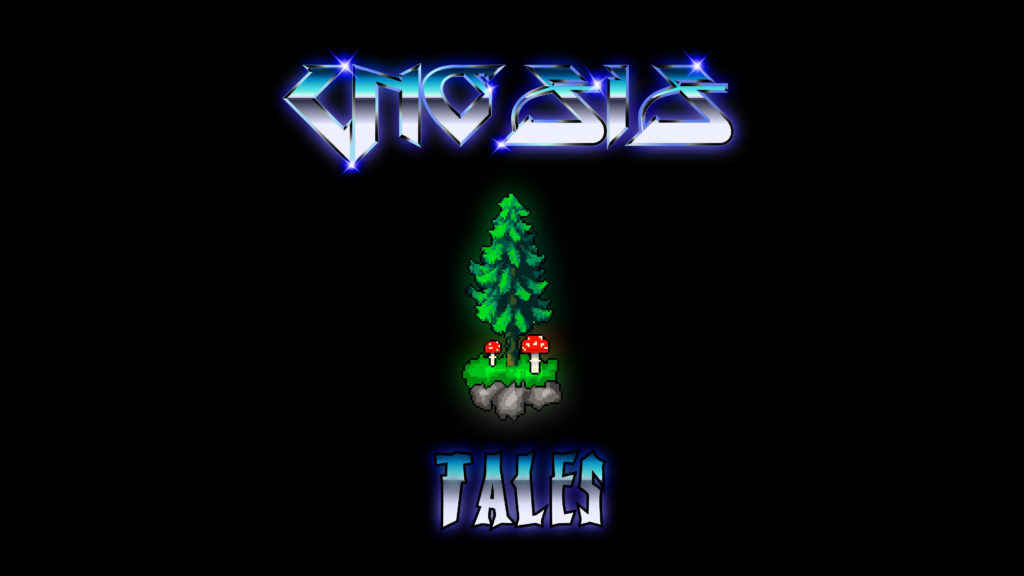 Tales (1994)
Tales (1994)
(Play this on
Spotify,
Bandcamp.) This was my first publicly available music disk, uploaded and released to local
BBS’es. These songs where made in
Scream Tracker on my first PC, and for me this was a huge jump from the 4 channel limitation on Amiga, to now 32 channels, full stereo and plenty of new effects. It is interesting to notice the music immediately becomes more “orchestral” and the arrangements more complex, as I have more room to play, but the basic naive musicality is still much the same.
I published this disk on local BBSes with a dialup modem, perhaps also on newsgroups, I cannot remember details. It was the dawn of the web, but BBSes was still active. I cannot recall why I choose the pseudonym Gnosis, but I think it was because I liked both the sound and spelling of the word, and the
mystical meaning. I was a very sensitive, dreamy and fantasy-inspired young artist. Just look at those curtains in the header photo!
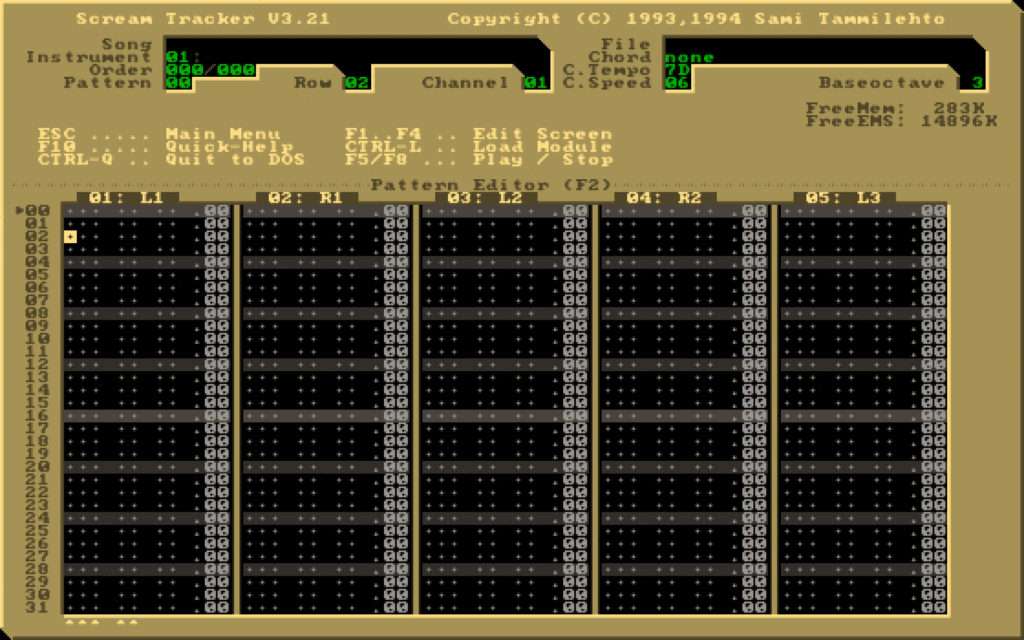
I was at the time of publishing Tales in high school, and things were getting better than secondary school, where I was very lonely. For the first time, in high school, my music opens doors for me. Through the music disks I find like minds: I remember it still today, the moment, one day at highschool, a person I slightly knew from another class comes up to me and asks: “hey are you that Gnosis guy, who made the Tales music disk?”
And boom, suddenly I had really great new friends, supergeeks into all the same things, several of them became friends for life. It is another story, but many of the people in this “geek tribe” went on to launch great startups and apps, and through this network I also found a path into adulthood in the city, a path into first jobs, apartments, into meeting other “real” musicians and eventually all the way to performing live. This newfound tribe, their networks and the companies they started and the opportunities they provided for me when I decided to risk it all for music with Ugress, was critical.
But all that is a story another time, just important to notice, the door to this future was opened by the Tales musicdisk.
 Vampyra (1995)
Vampyra (1995)
(Play this on
Spotify,
Bandcamp.) After working with Scream Tracker, and having found a network of like minded geeks, I was now introduced to building my own computer and new software:
Fasttracker, a better and more musical tool for me than Scream Tracker. I remember really enjoying Fasttracker. Things start to take off. I’m starting to create a more coherent sound and finding a “genre”. I’m learning how to build a powerful computer on the cheap, which can load more samples, process more channels, but it can also access the Internet, browsing the web or download usenet groups. I can now communicate online with a broader palette of artists and learn more hacks and tricks exponentially faster.
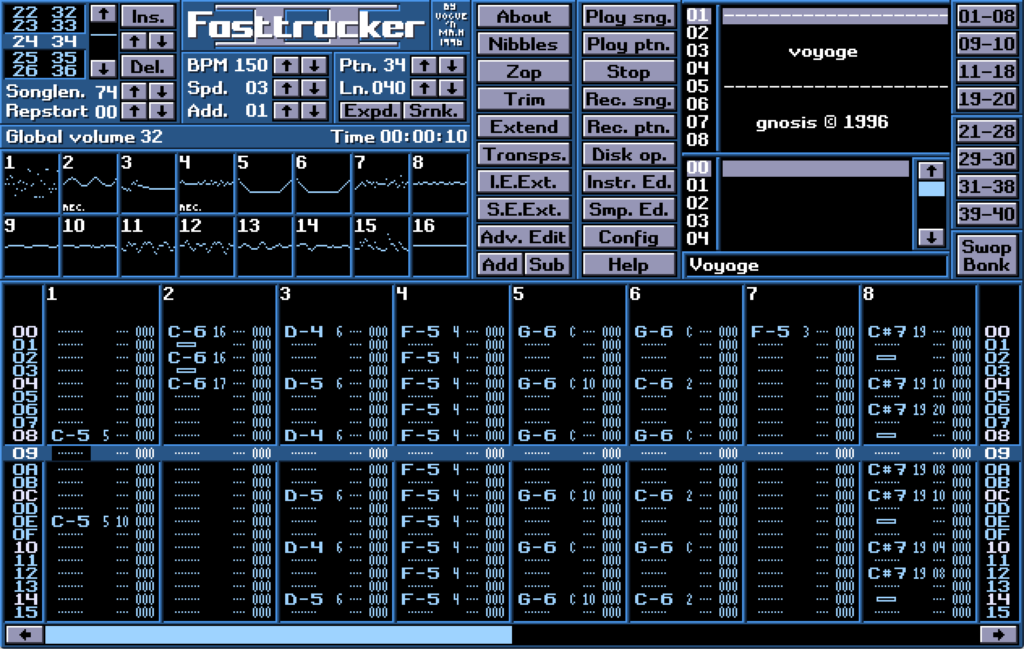
I discover newsgroups for sharing samples. I’m producing a lot more music, and exploring new genres, software, networks, piracy techniques, all the interesting things happens online. I’m studying IT and media at a college these years, but the stuff I learn in school seems completely useless, the topics feels like they are ten years behind reality. The main value of college is their
T1 internet connection.
I’m scared away from academia by its glacial pace. It is clear to me that the internet and creating your own path, on your own terms, is the future. Internet itself is slowly taking off, mp3s are simmering, and my music is getting spread worldwide. Pina of the Czech group Torture of Music reaches out, we find a great tone, develop a friendship that still lasts and Gnosis joins Torture of Music. Suddenly I’m no longer publishing and bartering alone. I remember being very proud of acceptance into an international demoscene group, however marginal my own role.
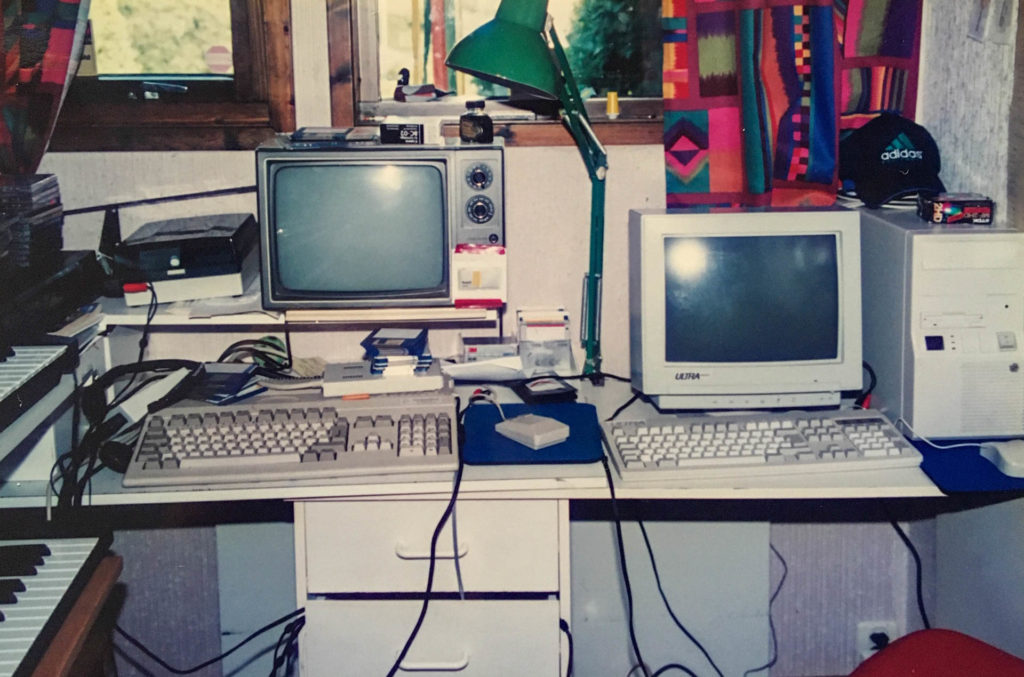
It is interesting to see this pattern – for each release, the music itself opens the “next” door, enable me to take “another step” into an increasingly larger world. Again, very much like the most basic video game: Finishing the current level, amass the necessary items the for next level, level up and move on to a harder difficulty.
From the perspective of today, I understand I was repeatedly encouraged by reality to keep releasing things for free – the value gained was in the network and world-growing each release created, not in any monetary income. I do not realise this at the time, I think none of us did.
 Incubus (1996)
Incubus (1996)
(Play this on
Spotify,
Bandcamp.) But oh dear what have we here, WHAT am I trying to do now. Clearly I’m influenced by the contemporary wave of techno and dance music, probably from being a young adult reluctantly dragged to loud clubs with partying friends, and then trying to make more “club” oriented music. The young artist desperately wants to gain some coolness and credibility. (Still on it!). I’m creating more complex and busy tracks, exploring all the technological possibilities in Fasttracker, and being more conscious of targeting the tracks towards a genre. Sometimes it workd, Voyage was a minor hit with dancefloors and foam parties. Here is
Fasttracker playing Voyage from 1996.This detour into EDM and clubbing isn’t suuuuper great for my work in itself, this music disk is probably the least interesting musically, at least for me? But this “step” was still important, because it was through this club-scene manoeuvre that Ugress a few years later made its live breakthrough It doesn’t happen so much these days, but at the start when we were touring, we often played more for dancefloors than a still standing, listening crowd. My first manager a few years later was a club promoter that I connected with through this 90ies dance culture and the local DJ scene.
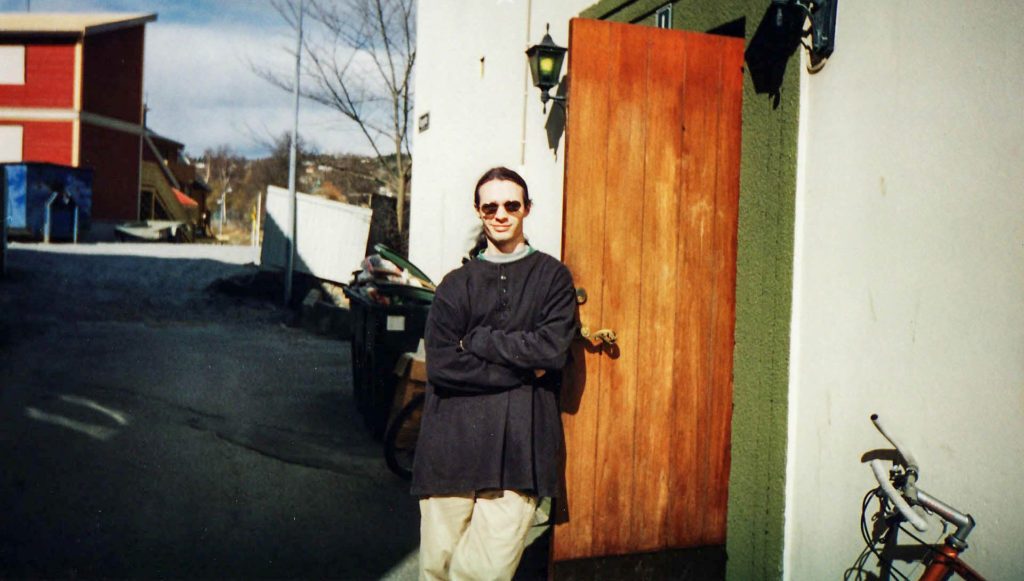
Again, today I realize this release and the music itself created the next path forward, all though here at bit slower than previously. Incubus was the last public music disk I released in 1996 as Gnosis. The next public release comes in 2000, with the first Ugress vinyl LP, also released for free download online. So what did I do for the inbetween four years? Paralyzed by the millenial bug? No, I messed around with:
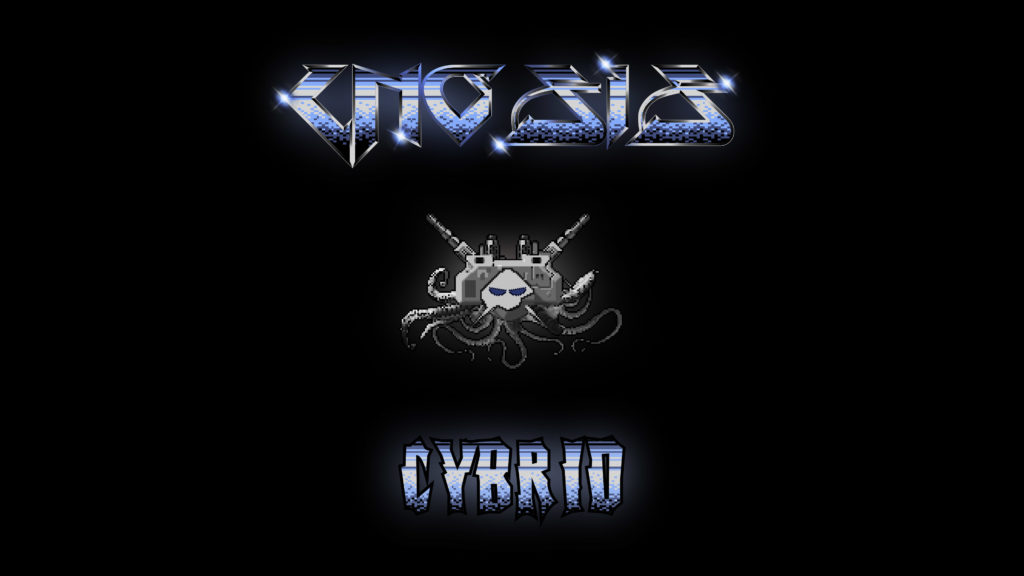 Cybrid (1998)
Cybrid (1998)
(Play on
Spotify,
Bandcamp.) This music disk has never before been released. This is music I did in The Lost Years, the end of 90ies, just before Ugress, when I tried moving from creating music only with trackers on computers, to making music “properly” with sequencers, samplers and synthesisers. I wanted to be a “real” musician, and tried to acquire all the stuff that real musicians had, and build a “real” studio.
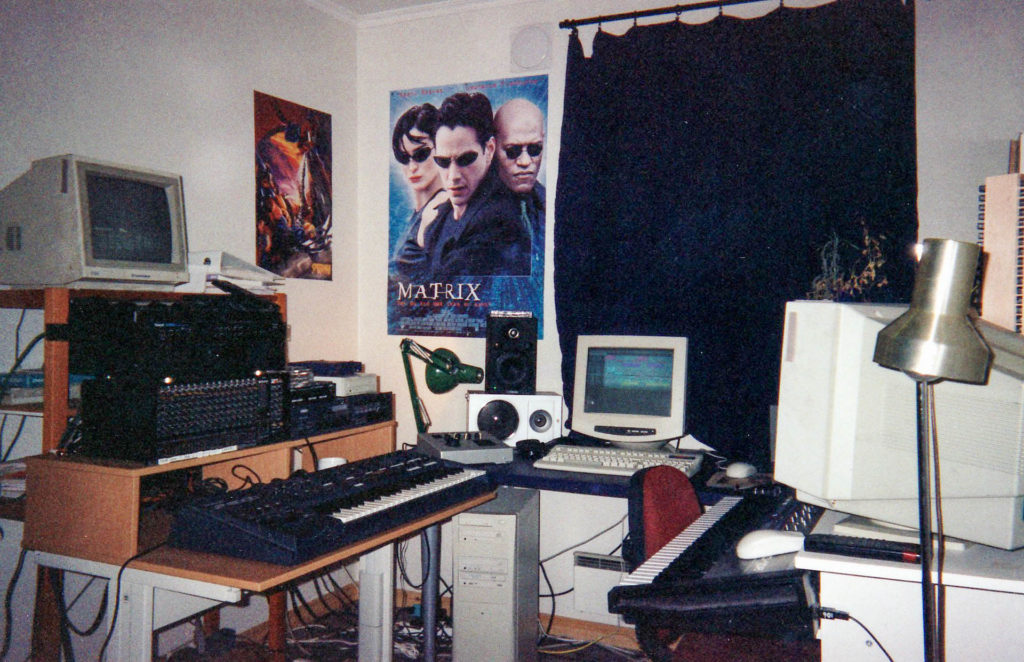
Ultimately, I think this “real musician” period was a step in the wrong direction. I lost myself for a few years here, messing around with too much gear, trying to be something I wasn’t made for. I learned a lot, but never found a footing. Eventually I returned to the computer, but not with trackers, now I was using
DAWs, but I used them in the same vein as trackers – everything is loadded and contained within the DAW. No outboard stuff, every song lives as its own contained digital work. Since 2000, I’ve preferred to do everything 100% inside the computer. I enjoy toying with hardware, especially synthesisers, and I’m fond of publishing vinyl, but it is always supplimentary.

The tracks from this period are therefore a combination of tracker music, sequenced device music and DAW processing, often all of this in the same track, which took a lot more time to finish. Maybe the song was started in a tracker, using samples from a synthesiser I programmed myself, then processed with a hardware effect, and then recorded, mixed and finished in a sequencer or DAW. Like a “real” musician. I think these tracks and this period is a bit lost, and “searching”, this was period of confusion both musically and technically, before I finally found my proper path again with Ugress, and going back to doing everything in the box with DAWs.
I can tell that I’m searching in the music, and there are clearly pointers towards Ugress when I listen to these tracks today, with layered breakbeats, cheeky movie samples, symphonic sounds, cinematic musicality and atmospheric soundscapes.
Conclusion
Today I am a peripheral and marginal but OPERATIONAL internet computer artist. I make my living as a pirate (cough) esteemed creator of realtime music and dramatically moving pixels. I am super grateful and so very happy for doing what I do, particularly since I’m sure being a notorius pirate artist is the ONLY thing I can be.
I now spend most of my time figuring out how to fake cinemascope art with ironic sense of immense catastrophe that makes you dance in your head and also runs in realtime on shoestring budgets live on a stage. I get to stamp label paperwork, and ride shotgun with tourbus drivers. And it actually WORKS. I don’t know why, but it just does. The impostor syndrome is stable. The Frankestein facade still stands. If we manage to nuke that virus, I’ll actually be touring Europe in a few weeks with all this madness.

I’m aware I have a very strange and individual path leading to where I am today. There is no recipe, but looking back on the 90ies from today, it is clear how sci-fi, computers, demoscene and indie software tools have shaped me, my path and my work. I think you can hear it still in the music today. Maybe most important to learn from this, is how the music releases IN THEMSELVES has always provided the paths that brought me where I am today. What I made, made the way for me.
This was true for the first 10 years reviewed above, and it has been doubly true throughout the following 20 years with Ugress. The music itself is always the portal to the next level. This phenomena increased exponentiall with Ugress. But, oh dear, look at the time! The stories of those releases, and the even stranger doors they have opened… the worlds I have seen… attack ships… and the future portals we have yet to enter… THAT is a grander tale, for another night.
Stay safe guys. Wash hands. See you
Wednesday?
 Story time, my macarons! (Concert time is on Wednesday.)
Story time, my macarons! (Concert time is on Wednesday.) Coincidentally, everything has come full circle. Right now we are ALL alone inside in front of a screen, trying to make sense of things. That’s how I started out, alone inside with a computer trying to make sense of things. And see? I’m still here, 30 years later! Don’t worry, we’ll be fiiiine. But we’ll probably all be pirates.
Coincidentally, everything has come full circle. Right now we are ALL alone inside in front of a screen, trying to make sense of things. That’s how I started out, alone inside with a computer trying to make sense of things. And see? I’m still here, 30 years later! Don’t worry, we’ll be fiiiine. But we’ll probably all be pirates. One or two years later, my dad got me a Commodore 64 for christmas, which I am eternally grateful for. I hold every christmas to this christmas, they all fail. He didn’t just give me a device for entertainment, he gave me access to a tool, a path into the future. I played games of course, but I was more interested in creating and programming than playing. I taught myself Basic, creating ridiculous text-based adventure games with challenges like “your mum tells you do do laundry, answer: yes or no”, cycling through all of the 16 screen colours and animating falling letters. I also dabbled with making ridiculous bleeps and bloops on the soundchip, but couldn’t figure out how to make music with Basic programming.
One or two years later, my dad got me a Commodore 64 for christmas, which I am eternally grateful for. I hold every christmas to this christmas, they all fail. He didn’t just give me a device for entertainment, he gave me access to a tool, a path into the future. I played games of course, but I was more interested in creating and programming than playing. I taught myself Basic, creating ridiculous text-based adventure games with challenges like “your mum tells you do do laundry, answer: yes or no”, cycling through all of the 16 screen colours and animating falling letters. I also dabbled with making ridiculous bleeps and bloops on the soundchip, but couldn’t figure out how to make music with Basic programming. Scionic (1993)
Scionic (1993) Tales (1994)
Tales (1994) Vampyra (1995)
Vampyra (1995) It is interesting to see this pattern – for each release, the music itself opens the “next” door, enable me to take “another step” into an increasingly larger world. Again, very much like the most basic video game: Finishing the current level, amass the necessary items the for next level, level up and move on to a harder difficulty.
It is interesting to see this pattern – for each release, the music itself opens the “next” door, enable me to take “another step” into an increasingly larger world. Again, very much like the most basic video game: Finishing the current level, amass the necessary items the for next level, level up and move on to a harder difficulty. Incubus (1996)
Incubus (1996) Again, today I realize this release and the music itself created the next path forward, all though here at bit slower than previously. Incubus was the last public music disk I released in 1996 as Gnosis. The next public release comes in 2000, with the first Ugress vinyl LP, also released for free download online. So what did I do for the inbetween four years? Paralyzed by the millenial bug? No, I messed around with:
Again, today I realize this release and the music itself created the next path forward, all though here at bit slower than previously. Incubus was the last public music disk I released in 1996 as Gnosis. The next public release comes in 2000, with the first Ugress vinyl LP, also released for free download online. So what did I do for the inbetween four years? Paralyzed by the millenial bug? No, I messed around with: Cybrid (1998)
Cybrid (1998) Ultimately, I think this “real musician” period was a step in the wrong direction. I lost myself for a few years here, messing around with too much gear, trying to be something I wasn’t made for. I learned a lot, but never found a footing. Eventually I returned to the computer, but not with trackers, now I was using DAWs, but I used them in the same vein as trackers – everything is loadded and contained within the DAW. No outboard stuff, every song lives as its own contained digital work. Since 2000, I’ve preferred to do everything 100% inside the computer. I enjoy toying with hardware, especially synthesisers, and I’m fond of publishing vinyl, but it is always supplimentary.
Ultimately, I think this “real musician” period was a step in the wrong direction. I lost myself for a few years here, messing around with too much gear, trying to be something I wasn’t made for. I learned a lot, but never found a footing. Eventually I returned to the computer, but not with trackers, now I was using DAWs, but I used them in the same vein as trackers – everything is loadded and contained within the DAW. No outboard stuff, every song lives as its own contained digital work. Since 2000, I’ve preferred to do everything 100% inside the computer. I enjoy toying with hardware, especially synthesisers, and I’m fond of publishing vinyl, but it is always supplimentary. I’m aware I have a very strange and individual path leading to where I am today. There is no recipe, but looking back on the 90ies from today, it is clear how sci-fi, computers, demoscene and indie software tools have shaped me, my path and my work. I think you can hear it still in the music today. Maybe most important to learn from this, is how the music releases IN THEMSELVES has always provided the paths that brought me where I am today. What I made, made the way for me.
I’m aware I have a very strange and individual path leading to where I am today. There is no recipe, but looking back on the 90ies from today, it is clear how sci-fi, computers, demoscene and indie software tools have shaped me, my path and my work. I think you can hear it still in the music today. Maybe most important to learn from this, is how the music releases IN THEMSELVES has always provided the paths that brought me where I am today. What I made, made the way for me.
